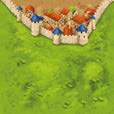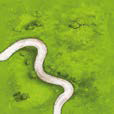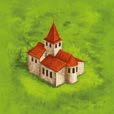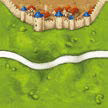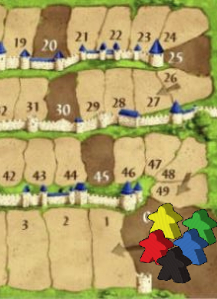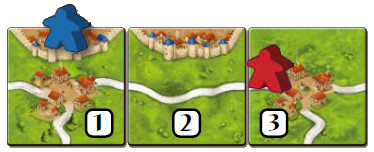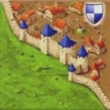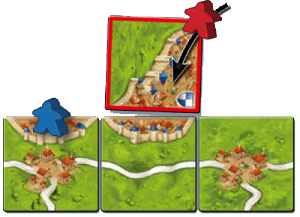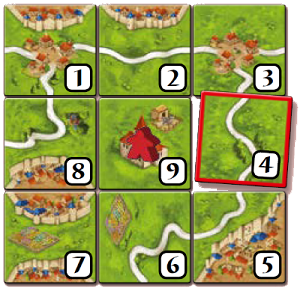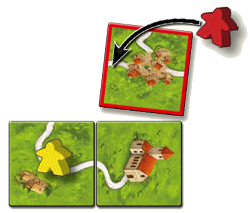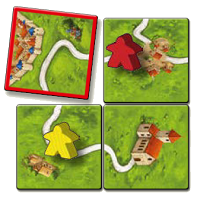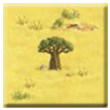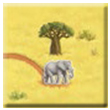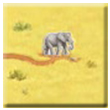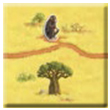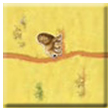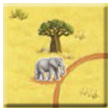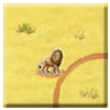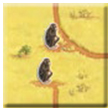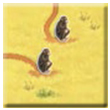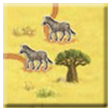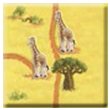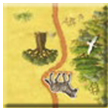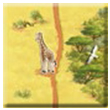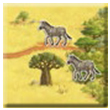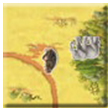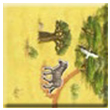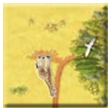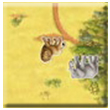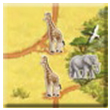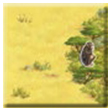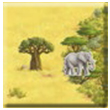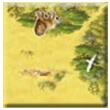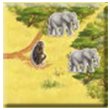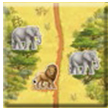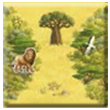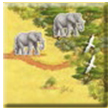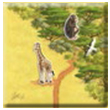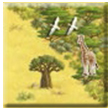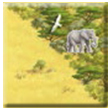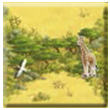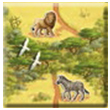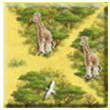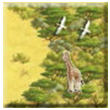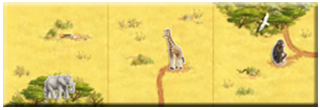Difference between revisions of "User talk:MajFrost"
m |
m |
||
| Line 88: | Line 88: | ||
<!--T:125--> | <!--T:125--> | ||
{{RulesPlacingMeeple|1=====|2=Placing a meeple | {{RulesPlacingMeeple|1=====|2=Placing a meeple on a path| | ||
3=After placing the tile, you may place a meeple as a highwayman on one of that tile’s road segments, but only if the road is unoccupied by another highwayman. | 3=After placing the tile, you may place a meeple as a highwayman on one of that tile’s road segments, but only if the road is unoccupied by another highwayman. | ||
| Line 110: | Line 110: | ||
<!--T:131--> | <!--T:131--> | ||
{{RulesScoring|1=====|2=Scoring a | {{RulesScoring|1=====|2=Scoring a path| | ||
3=When both ends of a road are closed, that road is completed and scored. The end of a road is closed when it meets a village<ref>[[File:Icon_World_Black.png|16px|text-bottom|]] Village is a little set of red roofed buildings surrounding the crossroad.</ref>, a city, a monastery, or it loops onto itself by meeting the other end.<ref>[[File:Icon_Open_Book.png|16px|text-bottom|]] '''Question:''' Can a road end in nothing? '''Answer:''' No, like all the usual land tiles, a road segment must continue to another road segment on all edges.</ref> | 3=When both ends of a road are closed, that road is completed and scored. The end of a road is closed when it meets a village<ref>[[File:Icon_World_Black.png|16px|text-bottom|]] Village is a little set of red roofed buildings surrounding the crossroad.</ref>, a city, a monastery, or it loops onto itself by meeting the other end.<ref>[[File:Icon_Open_Book.png|16px|text-bottom|]] '''Question:''' Can a road end in nothing? '''Answer:''' No, like all the usual land tiles, a road segment must continue to another road segment on all edges.</ref> | ||
Revision as of 21:58, 12 October 2018
General info and comments
Originally released by Hans im Glück in 2018.
Carcassonne, the world-famous French city,
Components and setup
Following part will explain initial setup and introduce components of the game.
The 72 LANDSCAPE TILES show roads, cities, and monasteries, in a field.
The backs of all the tiles are the same, but the START TILE has a darker colored back, so you can recognize it easily. Other graphical elements such as houses, people, or animals have no impact on the game[1].
Place the start tile (the one with a dark back) in the middle of the table[2]. Shuffle the remaining tiles and set them as different facedown stacks[3] that are easily accessible to all players.
Then comes the scoreboard, which you set to the side of your playing surface (table, floor, etc.).
Finally, we have the meeples. You will find in the box 40 regular meeples, including 8[4] meeples in each of these colors: yellow, red, green, blue, and black.[5] In addition, there are also 5 abbots[6], including 1 in each of the same colors.
Start by distributing 7 meeples of the color of their choice to each player. These meeples constitute each player’s personal supply. Each player takes seven meeples of their chosen color to form their supply. Place each player's eighth meeple on the 0 space on the scoreboard. These will be used to track each player's score throughout the game. If you are not playing with The Abbot, put those unique meeples back into the box.
Overview and goal of the game
In Carcassonne, players take turns placing tiles and expanding the landscape of roads, cities, monasteries and fields, one tile at a time. Players may place their meeples on the individual features of tiles as well (roads, cities, monasteries, and fields), where they will become highwaymen, knights and monks. Points are earned throughout the game, and the player with the highest score at the end is the winner!
Gameplay
A game of Carcassonne is played in clockwise order. Starting with the youngest player[7], the current player does the following actions in the order listed below, after which it is the next player’s turn, and so on and so forth. First, we’ll give you a brief description of the actions you have to do during one of your turns. These actions will be detailed as we present the roads, the cities, and finally the monasteries. So what are these actions?
- Placing a tile: The player must draw exactly 1 Land tile from a stack and place it faceup to continue the landscape.[8][9][10]
- Placing a meeple: The player may place a meeple from their supply onto the tile they have just placed.
- Scoring a feature: The player must score any feature completed by the tile placement.
The paths
Placing a tile
You draw the depicted tile with three road segments starting from a village. You must place it in such a way that it continues the existing landscape (the tiles already in play)[11]. In the rare case that a tile cannot legally be placed anywhere, and all players agree, it is removed from the game, and the player draws another. [12]
Placing a meeple on a path
After placing the tile, you may place a meeple as a highwayman on one of that tile’s road segments, but only if the road is unoccupied by another highwayman.
In our example, since the road is not yet completed, no scoring occurs (see action 3) and play moves on to the next player.
The next player draws a tile that he/she places to continue the landscape. They may not place a meeple on the road to the right since your highwayman is already present on that road. Instead, they choose to place their meeple as a knight in the city segment of that tile.
Scoring a path
When both ends of a road are closed, that road is completed and scored. The end of a road is closed when it meets a village[13], a city, a monastery, or it loops onto itself by meeting the other end.[14]
Even though it is your opponent that placed the tile, this still completes your road. How many points do you score? When scoring a road, each tile of that road grants you 1 point. Here, since you scored a road that is made out of 3 tiles, you score 3 points.
It is now time to note your score. You keep track of your score with the meeple you placed on the scoreboard before starting the game. Continuing our example, you move it forward 3 spaces to show that you’ve scored 3 points. Note: if your score passes 50 points, lay down your scoring meeple to show your 50+ points. After each scoring, return to your supply the meeple that was just scored.
We’ve already seen the most important parts of the game. Now, we will further expand on those actions by showing you how they apply to the other features, namely the cities and the monasteries:
The Bush
Placing a tile
Placing a meeple as a knight
Scoring a city
Let’s continue our example and assume that a few turns have passed. You now draw this tile that you place to continue your city. Since the tile you’ve placed completes a feature (here, the city), it must now be scored. A city is completed when it is surrounded by walls and there are no gaps inside the city. Since you have a meeple in the completed city, you are the player to score it.
Each tile in a completed city is worth 2 points. In addition, each coat of arms is worth 2 more points.[15] For this city, you score 8 points! As usual, the meeple that was in the scored feature returns to your supply.
Baobab
Placing a tile
Placing a meeple as a monk
Scoring a monastery
A monastery is completed when it is surrounded by tiles. During scoring, the monastery is worth 1 point per tile that completes it (including the monastery itself).
By placing this tile, you complete your monastery. It earns you 9 points and allows you to take your meeple back.
Patrol car
Placing a tile
Placing a meeple as a monk
Scoring a monastery
A monastery is completed when it is surrounded by tiles. During scoring, the monastery is worth 1 point per tile that completes it (including the monastery itself).
By placing this tile, you complete your monastery. It earns you 9 points and allows you to take your meeple back.
Placing a tile
Placing a meeple as a monk
Scoring a monastery
A monastery is completed when it is surrounded by tiles. During scoring, the monastery is worth 1 point per tile that completes it (including the monastery itself).
By placing this tile, you complete your monastery. It earns you 9 points and allows you to take your meeple back.
Waterhole
Placing a tile
Placing a meeple as a monk
Scoring a monastery
A monastery is completed when it is surrounded by tiles. During scoring, the monastery is worth 1 point per tile that completes it (including the monastery itself).
By placing this tile, you complete your monastery. It earns you 9 points and allows you to take your meeple back.
Summary
Placing a tile
- You must place your drawn tile in such a way that it continues the landscape and the illustration.
- In some very rare cases, it may be impossible to place the tile. In those cases, simply return the tile to the box and draw a new one.
Placing a meeple
- You may place a meeple on the tile you’ve just placed.
- You may not place a meeple in a feature where there already is at least one other meeple, including one of yours.
Scoring a feature
- A road is completed when both ends lead to a village, a city, a monastery, or the road forms a loop. Each tile in a completed road is worth 1 point.
- A city is completed when it is surrounded by walls and there are no holes inside the city. Each tile in the completed city is worth 2 points. Each coat of arms in the completed city is worth an extra 2 points.
- A monastery is completed when it is surrounded by 8 tiles. Each of the monastery’s tiles (the 8 surrounding tiles and the one with the monastery itself) is worth 1 point.
- Scoring always occurs at the end of a player’s turn. At that moment, each player with a meeple in a scored feature earns points.[16]
- After each scoring, return to your supply the scored meeples.
- If there are multiple meeples in a single scored feature, the player with the most meeples is awarded full points and all other players receive nothing. When more than one player have the most meeples in a scored feature, the tied players all score full points.
Game end and final scoring
The game ends immediately after the turn of the player who placed the last tile. Then, players proceed to a final scoring, after which the winner will be known.
Once the game is over, all meeples still in play are scored:
- Each incomplete road is worth 1 point per tile, just like during the game.
- Each incomplete city is worth 1 point per tile and 1 point per coat of arms, which is only half the points.
- Each incomplete monastery is worth 1 point plus 1 point per adjacent tile, just like during the game.
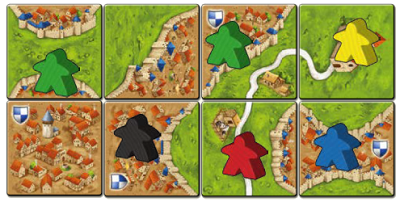
Final scoring - monastery: Yellow scores 4 points for this incomplete monastery (3 points for the adjacent tiles and 1 point for the monastery itself).
Final scoring - city: Blue scores 3 points for this incomplete city (2 tiles and 1 coat of arms).
Final scoring - road: Red scores 3 points for this incomplete roads (3 tiles).
Once the final score is known, the winner is the player with the most points.[17]
Special cases
Many meeples on the same feature
Use of a Table
A number of questions have been asked about rules related to the play area itself, including what happens when the edge of the area is reached, or if a table has to be used for play. The following clarifications are from Georg Wild from HiG (5/2013):
- The edge of the table is the limit for the game if, as stated in the rules, a table is used.
- The rules state that the starting tile is placed in the middle of the table. If all of the tiles are shifted to allow more room, the starting tile would no longer be in the middle. So in principle, total shifting of the tiles is not allowed. Additionally, with a manual shift of all of the tiles, the tiles and figures on the field can slip, which could lead to incorrect positioning of tiles or figures.
- Addition of a second table is possible if one of an appropriate height is added to the first table. If a table is extended (as with an additional panel), make sure that the tiles and figures on the playing field do not slip.
- Playing on the floor: The rules technically do not allow this, because the rules state that the first tile is placed in the middle of the table. Playing on the floor is not forbidden, however, if use of a table is not feasible. If the floor is used, tiles must be placed so all tiles are visible to all players. Tiles cannot be placed under the sofa, cabinet/shelf, etc.
- It is important generally, that all the players in the round agree how to play:
- Table - Standard
- Table - with "total shifting" of tiles
- Table - with extension
- Floor
- Continue to play fairly and not intentionally unfair to other players.
Tile reference
Total Land Tiles: 72 Tiles + 1 Start Tile
If several tiles of one type are present, it is listed which and how many animals are on each one.
The individual tiles are separated by a pipe symbol. Birds are not listed.
A = ape | E = elephant | G = giraffe | L = lion | Z = zebra | "-" = no animal
Total Animal/Watering Hole Tiles: 50
Letters indicate the animal included on each tile:
A = ape | E = elephant | G = giraffe | L = lion | Z = zebra
Total 50/100 Point tiles: 5
Footnotes
For Icons explanation and licensing please visit Icons page.
- ↑
 They have no impact considering the base rules. They are or in some case probably will be used in expansions. For example The Markets of Leipzig
They have no impact considering the base rules. They are or in some case probably will be used in expansions. For example The Markets of Leipzig
- ↑
 See notes on Use of a Table
See notes on Use of a Table
- ↑
 Tiles can also be placed into a sack and drawn randomly.
Tiles can also be placed into a sack and drawn randomly.
- ↑
 Question: Too few followers—are we playing wrong or are there really too few? Answer: In our view there are not too few. A certain shortage of followers is entirely intentional. An important element of the game is precisely learning to be economical with one's followers.
Question: Too few followers—are we playing wrong or are there really too few? Answer: In our view there are not too few. A certain shortage of followers is entirely intentional. An important element of the game is precisely learning to be economical with one's followers.
- ↑
 As far as the Big Box is concerned, the sixth set of (pink) followers is a part of the basic game, not Inns and Cathedrals.
As far as the Big Box is concerned, the sixth set of (pink) followers is a part of the basic game, not Inns and Cathedrals.
- ↑
 Usage of abbots is described in The Abbot mini expansion page
Usage of abbots is described in The Abbot mini expansion page
- ↑
 It is common practice to choose starting player at random. More on this in house rules section.
It is common practice to choose starting player at random. More on this in house rules section.
- ↑
 Question: We have difficulty deciding when a placed tile represents a new city or belongs to one already being built. Answer: 'Corner to corner' is not a connection! Segments can only be connected on the edges. In the example shown there are two cities at the moment.
Question: We have difficulty deciding when a placed tile represents a new city or belongs to one already being built. Answer: 'Corner to corner' is not a connection! Segments can only be connected on the edges. In the example shown there are two cities at the moment.
- ↑
 Cloisters can be placed directly next to each other, or corner to corner. It is not necessary for there to be eight other (non-cloister) tiles neighbouring a cloister. A cloister stands in the middle of a field segment and other segments can be placed next to it. In contrast to roads, cities, and fields, it is not possible to connect to a cloister.
Cloisters can be placed directly next to each other, or corner to corner. It is not necessary for there to be eight other (non-cloister) tiles neighbouring a cloister. A cloister stands in the middle of a field segment and other segments can be placed next to it. In contrast to roads, cities, and fields, it is not possible to connect to a cloister.
- ↑
 A newly placed land tile must fit the adjacent terrain on all edges. During placement it is not enough to look for only one side that fits.
A newly placed land tile must fit the adjacent terrain on all edges. During placement it is not enough to look for only one side that fits.
- ↑
 Question: On cloister tiles, are we allowed to deploy a follower on the surrounding field segment? Answer: Yes! The same rules are valid for a field surrounding a cloister as for any other field. You can also deploy a farmer next to a cloister. In this case the cloister remains unoccupied for the rest of the game.
Question: On cloister tiles, are we allowed to deploy a follower on the surrounding field segment? Answer: Yes! The same rules are valid for a field surrounding a cloister as for any other field. You can also deploy a farmer next to a cloister. In this case the cloister remains unoccupied for the rest of the game.
- ↑
 If drawing tiles out of a bag, a tile that cannot be placed could be returned to the bag for later use.
If drawing tiles out of a bag, a tile that cannot be placed could be returned to the bag for later use.
- ↑
 Village is a little set of red roofed buildings surrounding the crossroad.
Village is a little set of red roofed buildings surrounding the crossroad.
- ↑
 Question: Can a road end in nothing? Answer: No, like all the usual land tiles, a road segment must continue to another road segment on all edges.
Question: Can a road end in nothing? Answer: No, like all the usual land tiles, a road segment must continue to another road segment on all edges.
- ↑
 Note that a coat of arms only affects the city segment it is in, not the whole tile (if there is more than one segment on a single tile).
Note that a coat of arms only affects the city segment it is in, not the whole tile (if there is more than one segment on a single tile).
- ↑
 When two followers of one color are occupying a road, city, or farm, you do not score double in these cases. The number of followers (or in Inns and Cathedrals the size of the followers) has no effect on the points that a player earns from a road, city, cloister, or farm. Two knights do not double the points. The number of followers is only important in establishing who has the majority.
When two followers of one color are occupying a road, city, or farm, you do not score double in these cases. The number of followers (or in Inns and Cathedrals the size of the followers) has no effect on the points that a player earns from a road, city, cloister, or farm. Two knights do not double the points. The number of followers is only important in establishing who has the majority.
- ↑
 Rules do not include tiebreakers. That is rules explaining situation when few players share the same score.
Rules do not include tiebreakers. That is rules explaining situation when few players share the same score.
